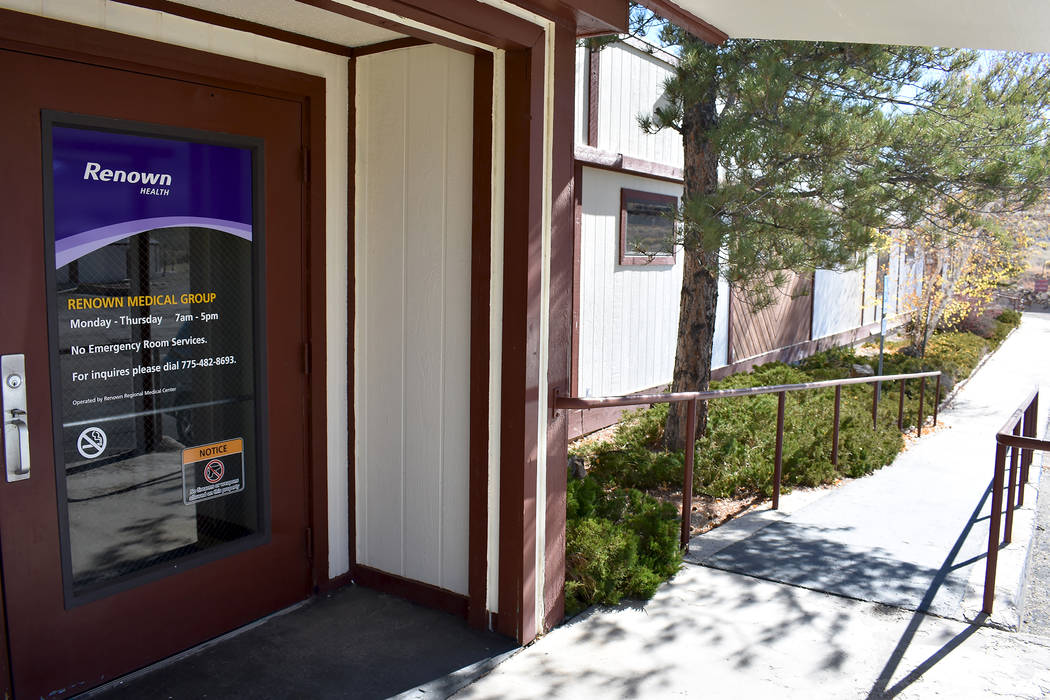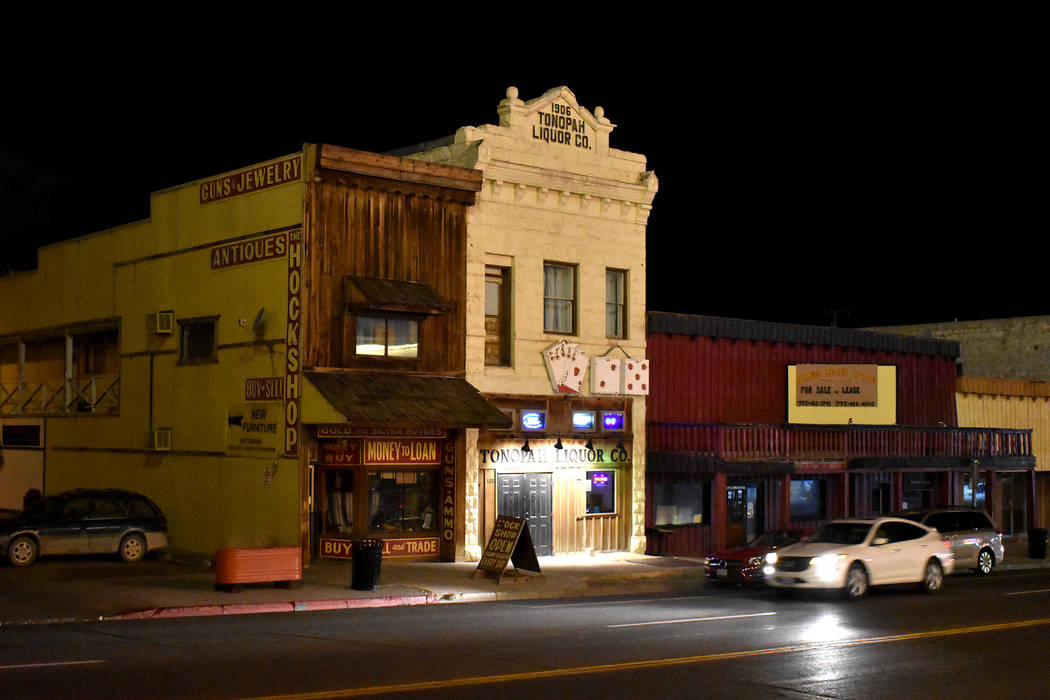Stakes high for rural medical care in northern Nye
Some residents of Tonopah who have lived in town for years are now talking about leaving the town, as they have to travel over a hundred miles to get to the nearest hospital.
Ann McGaw said when she moved to Tonopah 26 years ago, the hospital was running at “full capacity” with three doctors, a surgeon, a full-time emergency room and extended care. But over the years, she has watched the town’s medical services erode.
“Over this last 20 years, it’s just gone downhill to what we have right now,” McGaw said.
Nye Regional Medical Center closed in 2015, leading to problems for the volunteer ambulance crews who now have to travel more than 100 miles to Hawthorne in Nevada’s Mineral County or Bishop in California to get the sick and injured to the nearest hospitals. The roundtrips for crew members can span hours, taking away from time on their regular jobs and their families.
Like many residents of Tonopah, McGaw has to travel to Las Vegas frequently for all of her doctor appointments. She said Renown’s clinic, which provides telemedicine, is a “good start,” but added that a lot of people actually want to see a doctor in front of them.
“This telemedicine thing isn’t for everybody,” McGaw said, noting that some of the elderly patients may not be accustomed to the new technology.
The local pharmacy is also open only four days a week, further complicating the situation.
“If it’s desperate, you have to drive to Bishop or Hawthorne to fill a prescription, so really, we only have access to minimum health care,” McGaw said.
Dangerous highway
Another Tonopah resident, Deb Cobb, said since the hospital has closed, the community has lost several residents to road accidents.
“It’s really difficult, because we do know the needs in the southern area are greater than up here because of the population, but the needs up here are great for many, many reasons,” Cobb said.
Among those reasons, she names Tonopah’s increasingly aging population, the remote location of the town, and the dangerous two-lane highway between Las Vegas and Reno.
The heavily-traveled area of the highway between Reno and Las Vegas sees non-stop traffic with trucks, cars and semis swinging on the main street of Tonopah.
Tony Illia, spokesman for the Nevada Department of Transportation, said that the stretch of U.S. Highway 95 through Tonopah averaged 7,800 vehicles daily or 2,847,000 vehicles in 2016. That marks a 6.85-percent traffic increase from 2015.
“Most of the annual motorist crashes and fatalities occur in either metropolitan Las Vegas or the Reno/Sparks area,” Illia said in an email. “As such, there aren’t any rural areas that particularly stand out between Reno and Las Vegas as more or less dangerous than the next.”
Still, Cobb said those Tonopah residents who have to travel along a two-lane highway to Las Vegas or Reno for their doctor appointments don’t feel safe doing so.
“I’m going to speak for most. People feel very forgotten and left out, but this actual situation is the worst. It’s not just insulting, it’s demoralizing,” Cobb said.
A retired teacher for the University of Nevada Cooperative Extension who still volunteers in local youth programs, Cobb said Tonopah parents are often afraid of their kids getting an injury at games and local events.
“You go to a basketball game, and you hear somebody saying, ‘Oh my gosh, they just fell. We don’t have a hospital, what are we going to do?’”
“I don’t think that’s the way we should be living. I don’t think we should be so afraid to let our children be children,” Cobb said.
Cobb said she fears that one day, the town’s volunteer ambulance may not be enough to assist victims of a serious enough accident.
“These accidents are horrific, and what do you tell that patient when they are laying there?” Cobb shrugged.
Weather conditions also add to the adversity, Cobb said. The road to Bishop’s hospital can be treacherous, as it goes over a 7,150 feet mountain range. Sometimes, that road is closed due to hazardous weather conditions.
“We feel like we are forgotten about, that nobody cares,” McGaw said.
McGaw and Cobb said they are planning on leaving Tonopah because of the lack of health care in town.
“We are just waiting to get our house fixed, and put it on the market, then we are gone,” McGaw said.
“And I know my husband and I will leave also,” Cobb said. “We are not quite yet ready, but we are looking, and I know we are going to be leaving because we can’t stay here.”
The situation couald further hinder Tonopah’s population growth. While some might be attracted to the town’s rural lifestyle, the lack of medical care could deter many potential residents, Cobb said.
“We don’t have a hospital, we don’t have those basic necessities that people with young families need, and I think it’s going to hinder the progress of the town. It’s hard to get people to come out here and work and live when you don’t have a hospital,” McGaw said.
Both said that if nothing changes, Tonopah will continue losing its residents.
“I know many people are talking about leaving. Many, many,” Cobb said.
“I think the community will eventually just decline,” McGaw said. “Trying to get people to come here and bringing in new people into the town. Nobody wants to come if they don’t have a doctor.”
Roni Link, a volunteer who often drives a Tonopah ambulance across the swaths of northern Nye County and beyond said while Tonopah can’t grow without medical services, nobody wants to move to the town because of the lack of proper health care services.
“One of the biggest problems I see is they keep saying you need a bigger population. We can’t expand the population, they won’t come in because there’s no hospital. So, it’s a Catch-22,” said Link, also a member of the Northern Nye County Hospital District board.
Contact reporter Daria Sokolova at dsokolova@pvtimes.com. On Twitter: @dariasokolova77































